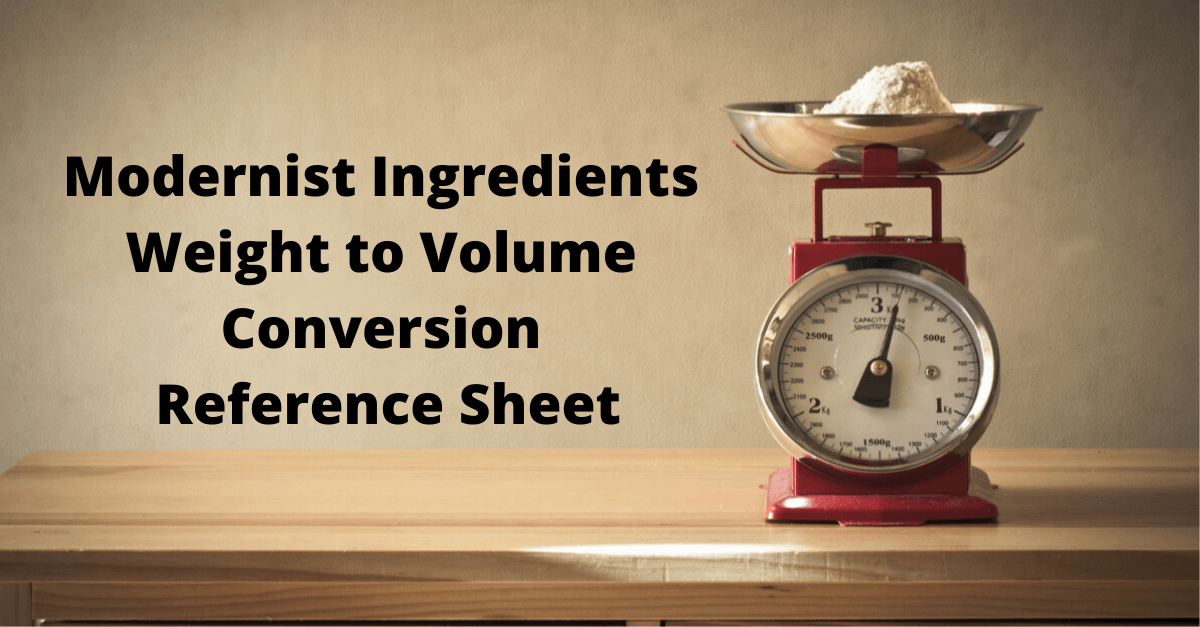The Struggle:
There is a constant struggle between two types of cooks. This divide comes between the classics and the perfectionists. A modern day version of “The Outsiders” pits two strongholds against one another. Trapped right in the middle of the crossfire is the recipe writers. We here at Modernist Pantry do our best to allow anyone to look at one of our recipes and feel as if they could make it. In our recipes we provide both weight and volumetric measurements. But what about at home? I know that before I understood the metric system if I saw a recipe with grams I would just look for another recipe. That lowercase “g” at the of a number made my brain misfire, turning the recipe into an illegible sheet of television static. But as I grew older and grew as a Chef, I wanted to have a better understanding of recipes. I wanted to refine recipes and do away with the semi obscure measurements such as 3/16ths of an ounce. When I began experimenting with modern cooking ingredients, they left very little wiggle room for such obscure measurements. But for those who still want to use their cups and tablespoons I have created a cheat sheet. Our modernist ingredient cheat sheet is here to help you figure out just how much to use in your recipes if you don’t have access to your gram scales.
“How do I convert Grams to Tablespoons?”
Weighing Your Options
I do not want to bore you with a long explanation about atomic weight and molar mass. But the biggest thing I need everyone to understand is that almost nothing weighs the same per volume. The best way to think about this is to fill two buckets one with lead and the other with feathers. The lead bucket will always be heavier. Even if we packed the feather bucket using a pneumatic press, the lead will outweigh it. So do not assume that because two ingredients are both white powders that they will weigh the same. Also don’t assume that if two people measure 1 Tablespoon of an ingredient they will weigh the same. Even if the tablespoon has been packed the same and leveled they will most likely weigh different amounts. So for the cheat sheet below we took a weight measurement of 1 teaspoon per ingredient. We measured each ingredient 3 times then calculated an average. The average per teaspoon is then multiplied by 3 to get the number for a tablespoon. This chart once again is an average per tsp/tbsp. So if you have a recipe that you want to convert to volume or vice versa feel free to use this handy dandy reference sheet, which covers most of the items that we carry. We will be updating this table over time so if you don’t see what you’re looking for on it, write in to Ask a Chef.



8 Comments.
Egg Yolk Powder 2.1g 6.6g
Three times 2.1 is 6.6?
sure is. Fixed
[…] edit: gonna add this one here too, for modernist ingredients […]
Expandex?
Hi:
I am a home cook, and was trying to learn more about Methyl Cellulose. I watched your video, as well as read the charts. Here is my question: why, on the charts, does the description of the “Function” read exactly the same for LV & HV? I am trying to decide which one to buy, but that is confusing.
Functions are generalized but exact application will vary depending on recipe. If you want your solution to be thicker use HV and if you want it to be more liquid use LV.
Volume and weight conversion sheet is brilliant. would be great if you had charts for all Molecular gastronomy required conversion posted. You could also put it at the back of all ingredient packaging you sell. Great fan of yours !!
Great info – thankyou